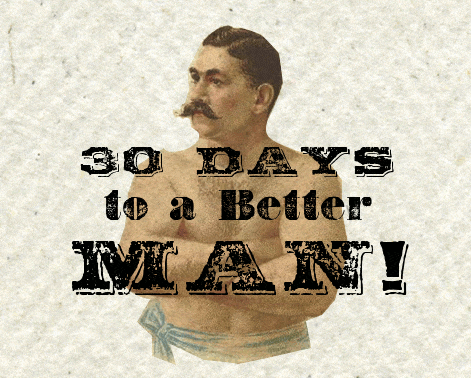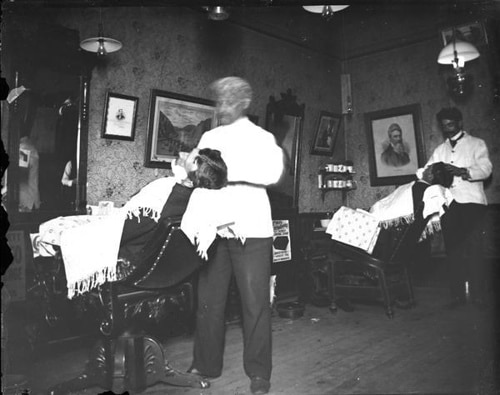With the economy in the tank, it’s more important than ever to tighten our belts and get our finances under control. The most effective tool to do this is the lowly budget. I’ve had an on again, off again thing with budgets. But when I’ve used them, my financial situation always improved. Of course, what ends up happening is that I get lazy, stop making time to review my budget, and fall back into just sort of winging it with my finances. While I don’t start spending like a high roller, I’ve noticed that when I’m not following a budget, my financial situation stagnates and doesn’t improve. And as men, especially as men taking this 30 Day challenge, we’re all about continual improvement. So today we’ll be creating a budget. Let’s go.
The Benefits of Having a Budget
Puts you in control. A man is always in control. He’s in charge. But when you don’t have a budget, your money controls you, instead of the other way around. You want to be the man with a plan, not the man floating along with his head in the clouds.
Reduces stress. If you don’t keep a budget, you’re inevitably going to run into a situation where you don’t have a clue about how much money you have in your account, and you’ll end up incurring some sort of overdraft charge. Not knowing how much money you have at your disposal can create a lot of unneeded stress. You don’t know if you’re check is going to bounce; you don’t know if you’re going to have enough money for the month’s rent; you don’t know how you’ll pay for an emergency if it arises. By having a budget, you can know exactly what’s going in and out and focus on more important things in your life.
Increases confidence. There’s something about knowing exactly where your money is going that increases your confidence. I think it has something to do with the feeling of control a budget gives you. Plus, having a budget can help you make decisions faster and more confidently. Instead of hemming and hawing over every single purchase you make, you can just look at your budget, see if you have money available for it, and make your decision.
How to Create a Budget
1) Assess your monthly income. Gather your pay stubs together and figure out exactly how much you’re bringing in each month. If you’re self-employed or do work on the side, make a close estimate of how much you earn a month. You need to know how much money you have to work with before you start budgeting it out.
2) List your fixed expenses. Fixed expenses are those that stay about the same each month. There’s usually not much you can do to change the amount you pay on fixed expenses. Fixed expenses can include things like rent or mortgage payments, car insurance, car payments, and health insurance.
3) Subtract your total fixed expenses from your total monthly income. The amount that’s left over is what you can work with for your variable expenses. If your fixed expenses are more than your total monthly income, you’re in trouble. You may need to downgrade to a smaller house or perhaps sell your car and get an old beater so that you have money left over for things like food, gas, and savings.
4) Set a spending goal for variable expenses. Now that you know how much money you have to work with, you can start budgeting for your variable expenses. Variable expenses are those that fluctuate from month-to-month. You have a degree of control over variable expenses. These are the areas where you can cut back the most and start getting ahead in your finances. Variable expenses include items like groceries, gasoline, eating out, and entertainment. Set a reasonable spending goal for each variable expense.
The two most important variable expenses, and the ones that you should budget for before you budget any others, are a retirement and emergency fund. Let’s face it, when it comes to retirement, we can no longer depend on our jobs or the government to fund it. So it’s up to us to do it. Set aside a small amount each month that you can put into a Roth IRA or your 401K.
In addition to saving for retirement, budget some money each month for an emergency fund. This money is to be used only in, well, emergencies, like unexpected unemployment or car repairs. Even if you can only sock away $25 a month in the beginning, it’s better than nothing. Most financial experts agree that you should save enough for three to six months of living expenses. If you’re looking for a good place to stash your emergency fund, check out ING Direct. It’s an online bank and they have decent interest rates. It’s what I use.
In addition to a retirement account and an emergency fund, you may also want to budget for what I call a “freedom account.” I put a monthly sum into the account to pay for expenses that come up regularly during the year. This includes a yearly vacation, oil changes, weddings gifts, Christmas presents, dentist and doctor appointments, etc.
4) Subtract your total expenses (fixed and variable) from your monthly income. The goal is for your expenses to be less than your income. If they’re not, you’ll need to tweak it some so that they are. This may mean cutting back or cutting out things like going out to eat or cable television. If you have any surplus, put it into your emergency fund or towards your retirement.
5) Keep track of spending. After you’ve created the budget for the month, keep track of every single penny you spend to ensure that you stay within your budget. Keeping track of your spending will also come in handy when you make next month’s budget. You’ll be able to review how much you spent the previous month and adjust your budget accordingly. One of the best ways I’ve found to keep track of your expenses is Mint.com. You can connect your bank account to Mint, and each week you’ll get a report telling you how much you’ve spent on groceries, gasoline, etc. It can be very helpful and eye-opening to see your expenses broken down into a color pie chart; you may be surprised about what portion of your money is going to things like eating out.
One of the best old-school methods of keeping track of your budget is to put the money you budgeted for certain things like groceries into envelopes. You only use the money in the envelope when making purchases for that thing. When the money runs out, you’re done spending in that category for the month.
6) Review your budget every month. Each month, go over last month’s budget to see how you did. You’ll be able to see where you did well and where you can improve. After you review, repeat the whole process and make next month’s budget.
Tools For Budgeting
Below, we’ve created a short list of budgeting tools that you can use to help you get started with your budget. What’s nice about all of them is that they’re free!
Online
- Mint (This is what I use. I highly recommend it.)
- Geezeo
- Quicken Online
Free Budgeting Spreadsheets
Today’s task is to create a budget! If you already have a budget, then check it over, look for ways to increase how much you’re saving and putting towards retirement, and check out some of the resources above to help you keep track of your expenses.
Listen to our podcast on why you need a budget:



